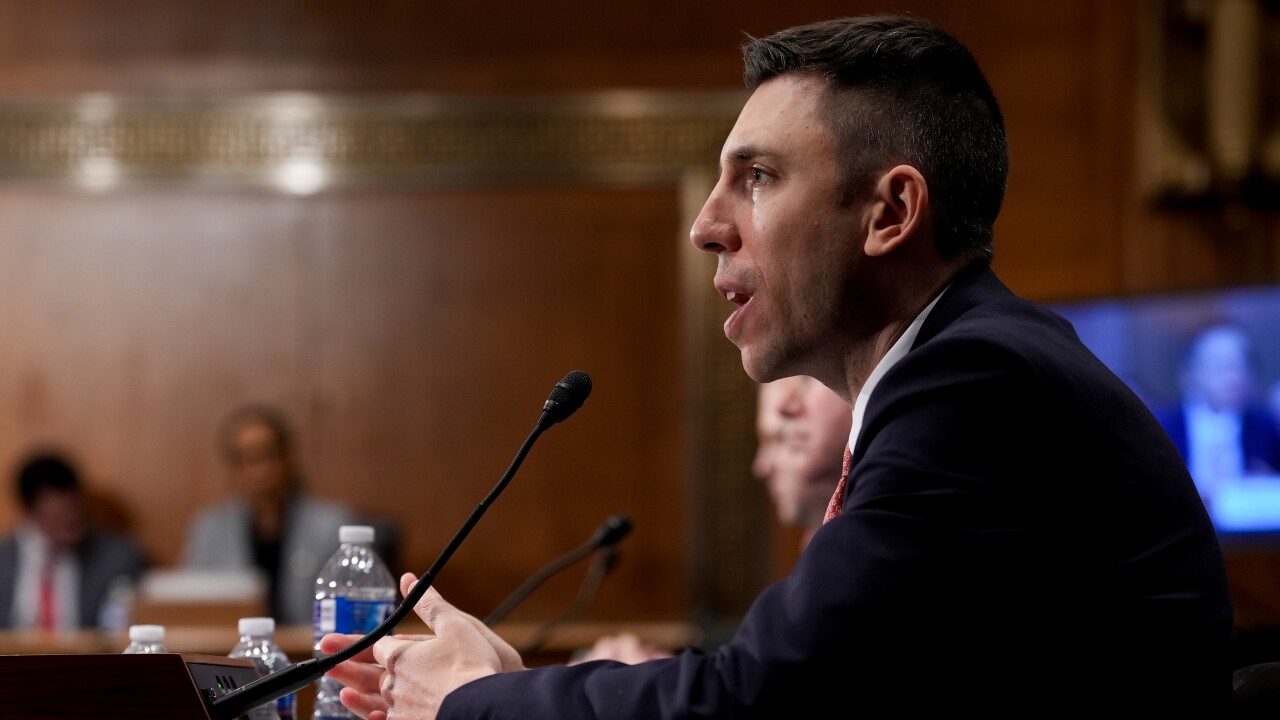
A close friend recently visited her
I used to chair an agency responsible for overseeing thousands of community banks, the Federal Deposit Insurance Corporation, or FDIC. When I heard this story, it reinforced my concern that community bank regulation has become too prescriptive and heavy-handed, burdening both community banks and their customers. Know-your-customer requirements, designed to keep bad players out of the banking system, often force bank employees to spend inordinate amounts of time probing the background of a customer they know well. In the case of a new account, this means distracting customers from more useful conversations explaining the bank's products and services, which is particularly important for young people and others new to the financial system.
But this is just one example drawn from a morass of regulations that are expensive, outdated and often counterproductive. They also put community banks at a competitive disadvantage. The growing legion of online, state-regulated nonbank lenders are only subject to a fraction of their burdens, while larger banks can more easily absorb the costs. According to the Conference of State Bank Supervisors, the percentage of community banks' budgets spent on compliance personnel is twice that of larger institutions.
Dozens of reporting thresholds meant to protect smaller banks from unnecessary paperwork have not been updated for decades. Indeed, the very definition of "community bank" used by the FDIC has not been updated since 2010 when it was set at $10 billion. Adjusted for inflation, that asset threshold would be $25 billion today.
Currency transaction report, or CTR, regulations, requiring banks to report any cash transaction exceeding $10,000, have not been updated for over 50 years. Indexed for inflation, the threshold would be $77,000 today. Banks are forced to report on large numbers of routine transactions, distracting them from truly suspicious activity.
The Community Reinvestment Act, or CRA, which requires banks to serve the credit needs of their local communities, particularly low- and moderate-income families, also falls disproportionately on community banks. The law was passed in the late 1970s in response to the pervasive use of "redlining" by lenders to deny credit in predominantly minority neighborhoods. But today, the bigger problem afflicting minority neighborhoods is the extension of abusive, high-cost credit by nonbank lenders to which the CRA does not even apply.
Though small banks have a durable customer base in the small-business sector, the decades-long consolidation trend will likely speed up, according to a new report from Morningstar DBRS.
Community banks are eager to serve all customers but frequently find that low-income households in their service areas are already overburdened with debt or do not meet standards of creditworthiness required by regulators. Rather than layering even more requirements on highly regulated community banks, policymakers should focus on expanding CRA to nonbank lenders.
Government bailouts have also hurt community banks. Megabanks viewed as "too big to fail" have lower costs of capital than community banks, which must pay higher rates to their large depositors and bond investors. To attract and maintain uninsured deposits, small banks are also forced to pay significant fees to "reciprocal deposit" firms which provide expanded FDIC coverage by exchanging customer funds with other banks.
In the 14 years since I left the FDIC, the number of community banks has shrunk from 7,000 to 4,000. Early in his tenure, U.S. Treasury Secretary Scott Bessent gave a speech promising help to community banks. Unfortunately, the administration's regulatory appointees have focused more on helping big banks, with proposals to weaken their capital requirements, hamstring their examiners and lighten their consumer compliance exams.
To its credit, the FDIC has proposed updating reporting benchmarks in its own regulations, but other regulators have not followed suit. It has also proposed a survey to gather information on the costs of anti-money-laundering and terrorist financing requirements. The OCC
Community banks are the crown jewel of America's banking system. As smaller, locally based institutions, they are best equipped to provide the kind of personalized banking services so needed by local households and businesses. They fund more than 60% of small-business loans, the main reason why the U.S. leads in job-creating small-business formation. But they face disproportionately harsh regulatory burdens that put them at a competitive disadvantage. Help for community banks must be a higher government priority.






